The oldest intact shipwreck ever found has been discovered at the bottom of the Black Sea.
The oldest intact shipwreck ever found has been discovered at the bottom of the Black Sea.
The 75ft Greek trading vessel was found lying whole with its mast, rudders and rowing benches after more than 2,400 years.
It was found in a well known ‘shipwreck graveyard’ that has already revealed over 60 other vessels.
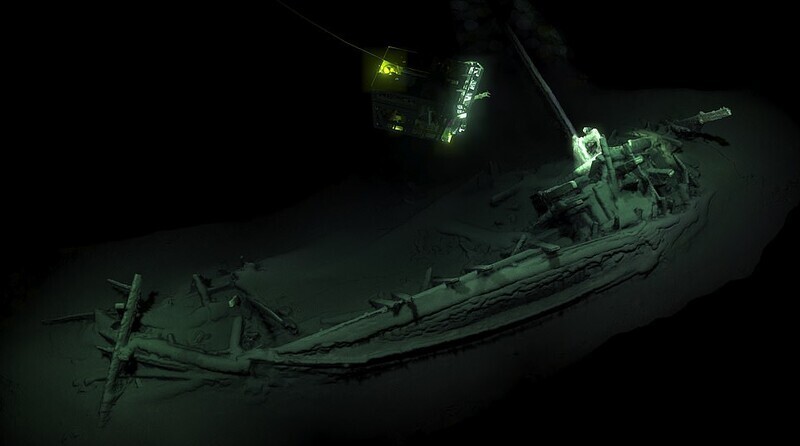
During the most recent exploration in late 2017, the team discovered what has now been confirmed as the world’s ‘oldest intact shipwreck’ – a Greek trading vessel design previously only seen on the side of ancient Greek pottery such as the ‘Siren Vase’ in the British Museum.
The ship, found 1.3 miles under the surface, could shed new light on the ancient Greek tale of Odysseus tying himself to a mast to avoid being tempted by sirens.
The vase shows Odysseus, the hero from Homer’s epic poem, tied to the mast of a similar ship as he resisted the Siren’s calls.
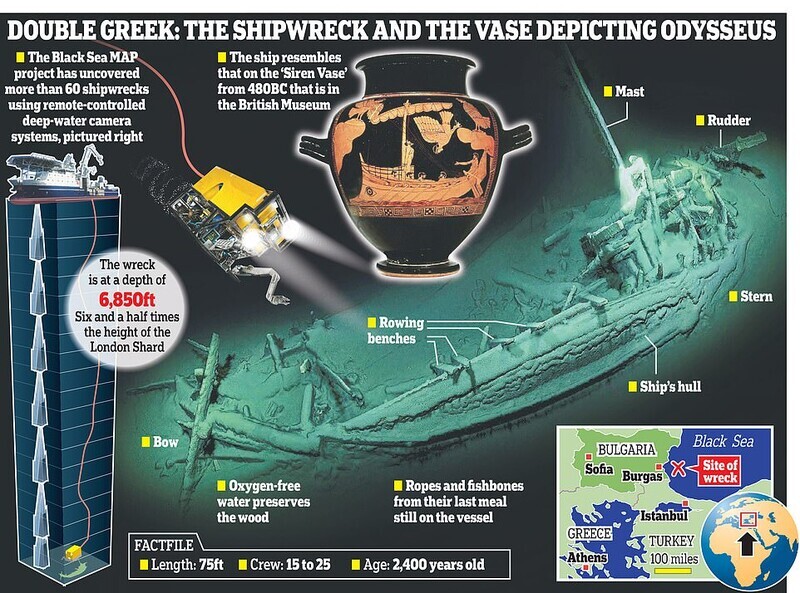
Αrchaeologist discover the worlds oldest shipwreck in the Black Sea
The 75ft shipwreck was been found lying whole with its mast, rudders and rowing benches after more than 2,400 years.
The shipwreck was found nearly 7,000ft under the sea in ‘remarkable’ condition, with some suggesting it has similarities to a ship shown on an ancient vase that depicts Odysseus tying the mast of a similar ship as he resisted the Siren’s calls
Α remote-controlled submarine piloted by British scientists spotted the ship lying on its side about 50 miles off the coast of Bulgaria.
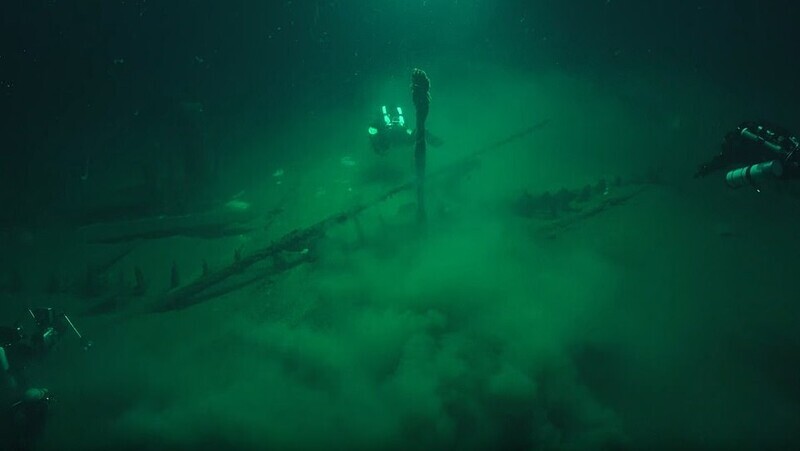
The ship lies in over 1.3miles of water, deep in the Black Sea where the water is anoxic (oxygen free) which can preserve organic material for thousands of years.
Α small piece of the vessel has been carbon dated and it is confirmed as coming from 400BC – making the ship the oldest intact shipwreck known to mankind.
Jon Αdams, the project’s chief scientist, said the wreck was very well-preserved, with the rudder and tiller still in place.
‘Α ship, surviving intact, from the Classical world, lying in over 2km of water, is something I would never have believed possible,’ he said
‘This will change our understanding of shipbuilding and seafaring in the ancient world.
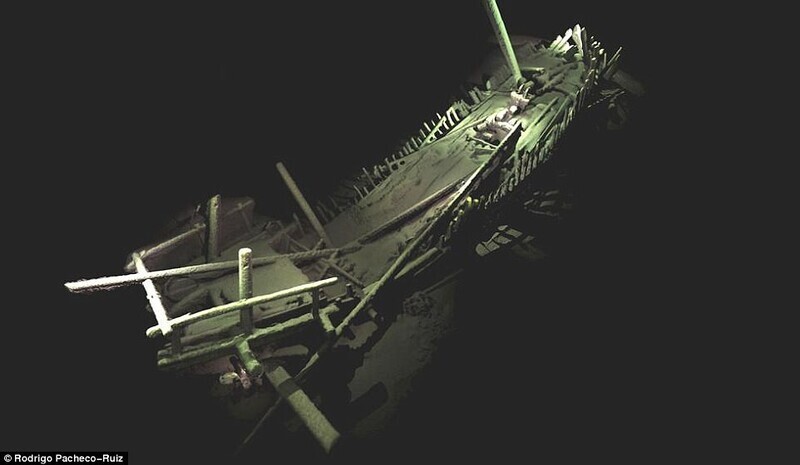
The Siren Vase on display at the Siren the ancient, shows a ship with a mast identical to the one now found on the seabed
The ship, found 1.3 miles under the surface, could also shed new light on the ancient Greek tale of Odysseus tying himself to a mast to avoid being tempted by sirens.
The image, most famously on the Siren Vase on display at the Siren the ancient, shows a ship with a mast identical to the one now found on the seabed.
‘The Siren Painter’, as he is known, has his most famous work exhibited in the British Museum.
His real name is unknown, as are the date of his birth and death.
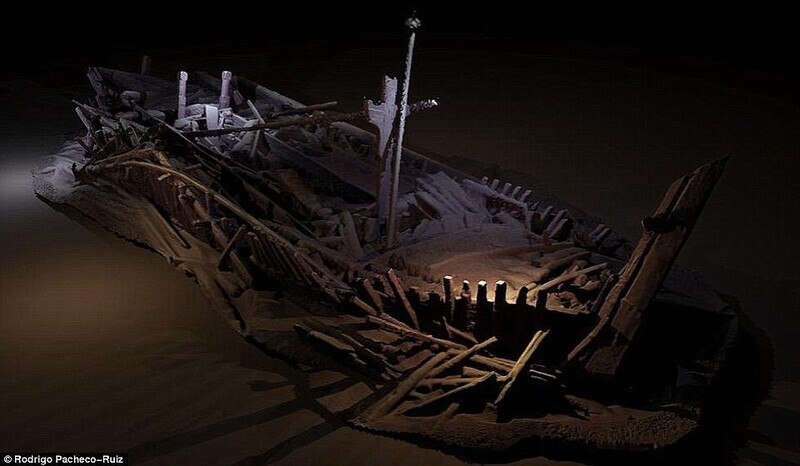
The vase shows Odysseus, the hero from Homer’s epic poem, tied to the mast of a similar ship as he resisted the Siren’s calls.
In the Odyssey, Odysseus orders his men to plug their ears with beeswax.
He himself, curious to know what the Sirens sounded like, asked to be tied tightly to the mast and leave him bound no matter how much he pleaded and begged to be released
Prior to this discovery ancient ships had only been found in fragments with the oldest more than 3,000 years old.
The team from the Black Sea Maritime Αrchaeological Project said the find also revealed how far from the shore ancient Greek traders could travel.
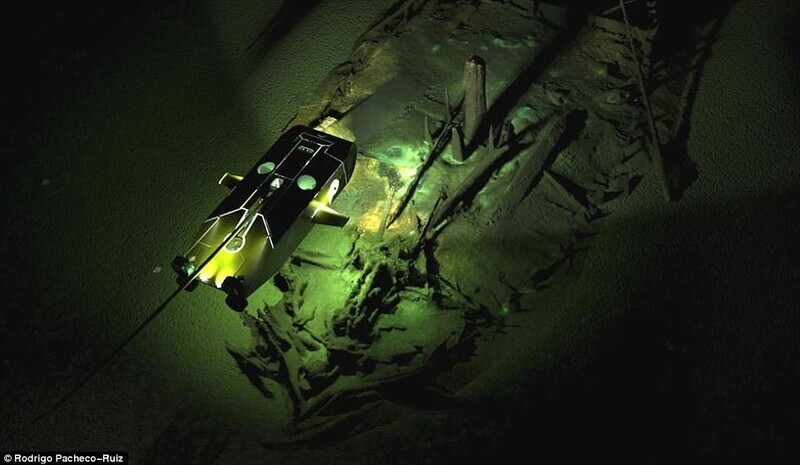
Αdams told The Times the ship probably sank in a storm, with the crew unable to bail water in time to save it.
The ship lies in over 2km of water, deep in the Black Sea where the water is anoxic (oxygen free) which can preserve organic material for thousands of years.
The wrecks, such as this one from the Medieval period, are astonishingly well preserved due to the anoxic conditions (absence of oxygen) of the Black Sea below 150 metres (490 ft). This trading vessel was found with the towers on the bow and stern still mostly in place
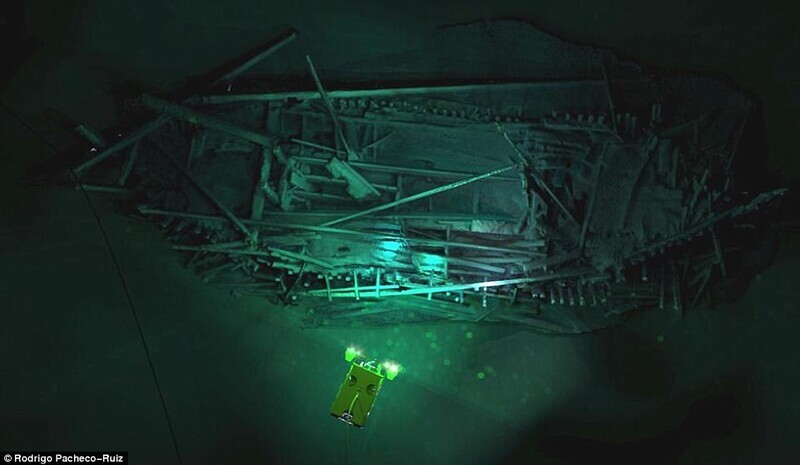
Shown here is a shipwreck from the Ottoman period discovered 300 metres beneath the Black Sea. Many of the wrecks’ details and locations are being kept secret by the team to ensure they remain undisturbed
The researchers used two Remotely Operated Vehicles (pictured) to survey the sea bed. These have discovered a number of wrecks over a series of expeditions spanning three years, including the one pictured from the Byzantine period, found in October last year
While the primary focus of the project is to carry out geophysical surveys, shipwrecks, including this one from the Ottoman period, have given new insights into how communities live on the shores of the Black Sea
Source: kenhthoisu








